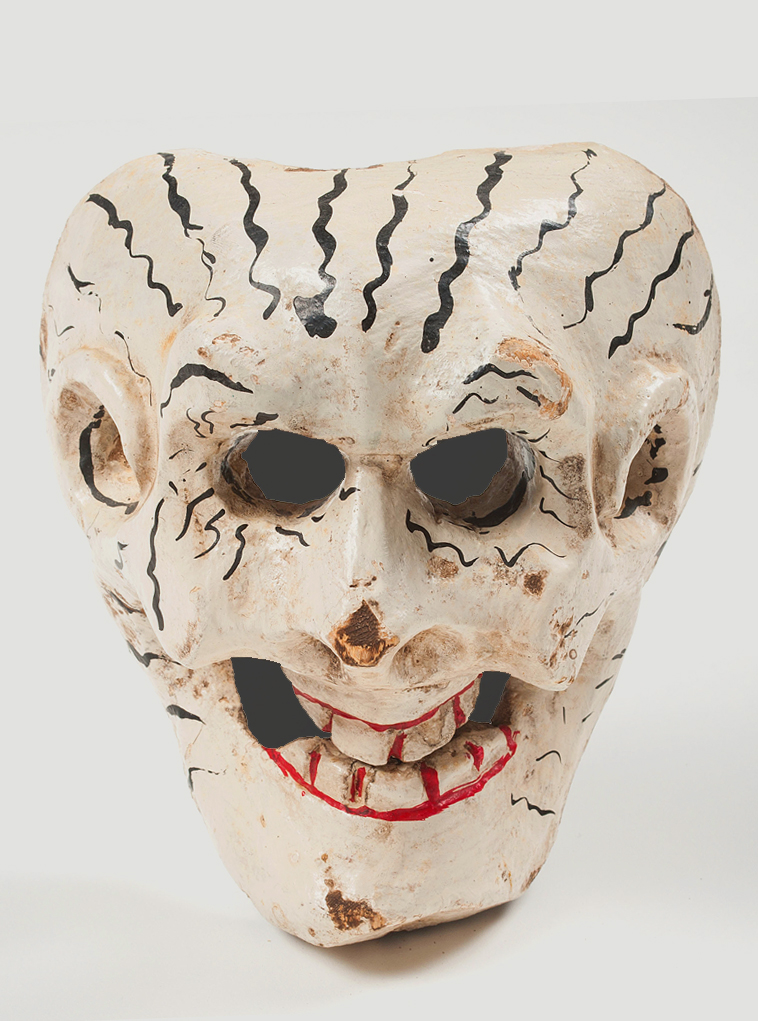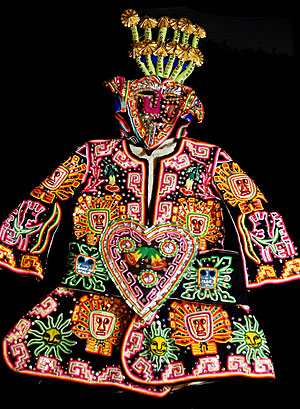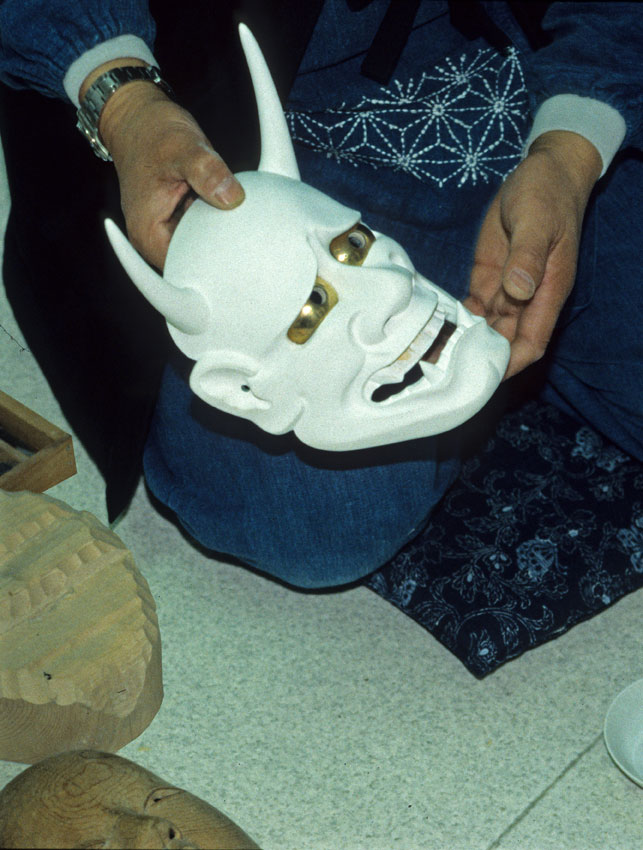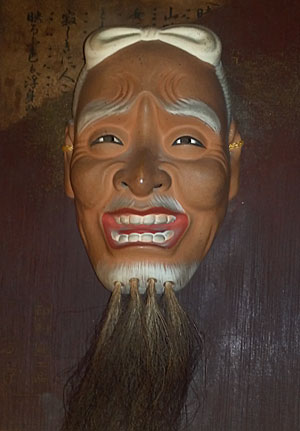 If this mask was actually used on an offering table, in a dance or ceremony, it would be considered authentic. This is often the the case with Mexican masks because the village carvers usually sell their extra masks to tourist and shop keepers.
If this mask was actually used on an offering table, in a dance or ceremony, it would be considered authentic. This is often the the case with Mexican masks because the village carvers usually sell their extra masks to tourist and shop keepers.
Some of you know I have long been a big fan of Mexican masks. Whether the carver is a well-trained professional or a part-timer in a country village, they like to express themselves. This guy wants to have a little fun with his quickly carved skull. The next one he makes may be quite different. But he always is expressing his feelings. Cultural traditions are often followed, but to a lesser extent than in the rest of the world. Here is a little more from Wikipedia:
The Day of the Dead (Spanish: Día de Muertos) is a Mexican holiday celebrated throughout Mexico, in particular the Central and South regions, and by people of Mexican heritage elsewhere. The multi-day holiday involves family and friends gathering to pray for and remember friends and family members who have died, and helping support their spiritual journey. In Mexican culture, death is viewed as a natural part of the human cycle. Mexicans view it not as a day of sadness but as a day of celebration because their loved ones awaken and celebrate with them.
Scholars trace the origins of the modern Mexican holiday to indigenous observances dating back hundreds of years and to an Aztec festival dedicated to the goddess Mictecacihuatl. It has become a national symbol and as such is taught (for educational purposes) in the nation’s schools. Many families celebrate a traditional “All Saints’ Day” associated with the Catholic Church.
B or C





